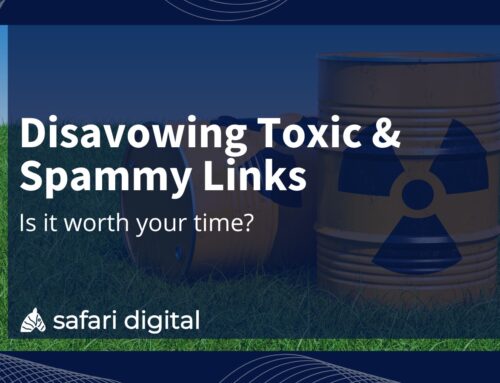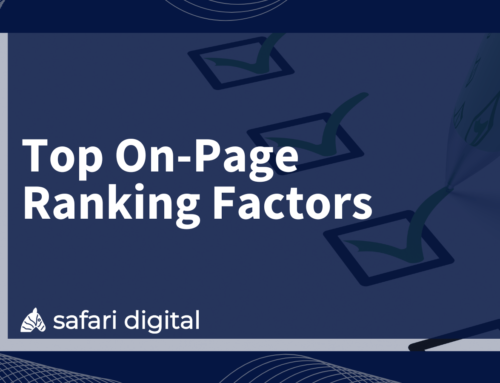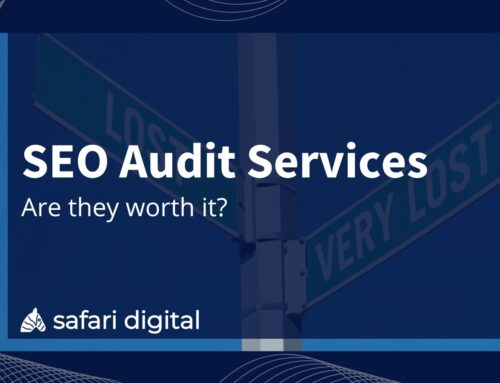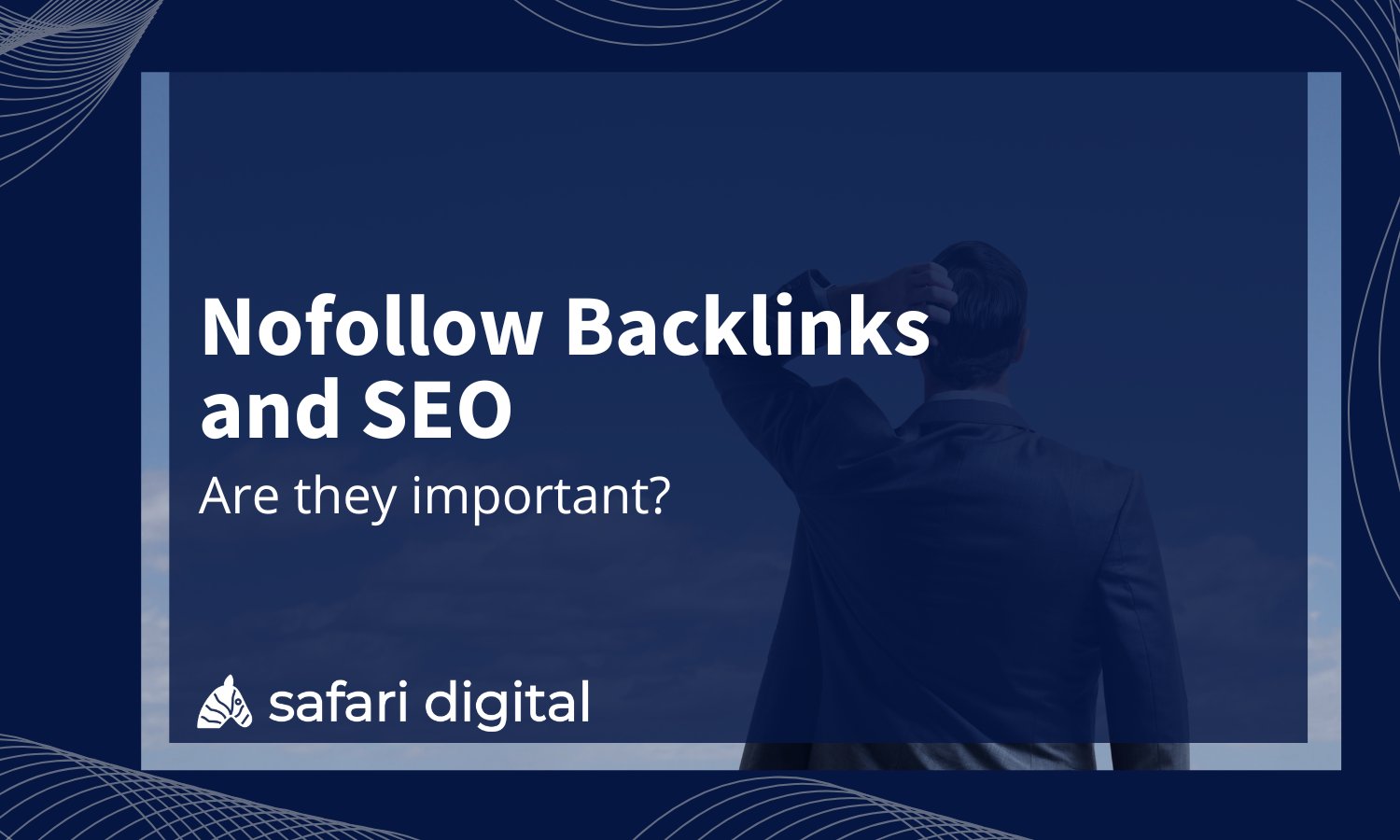
How do nofollow backlinks impact SEO and are they worth your time and consideration in 2024?
It’s a question that SEO experts and amateur SEO sleuths alike have all pondered at some point. In theory, the evidence is clear – Google that links with the HTML nofollow attribute attached to them are not “followed” by Googlebots and therefore don’t pass PageRank or link equity to the attached site.
However, changes to the way that Google categorises nofollow backlinks back in 2020, as well as plenty of anecdotal evidence floating around the SEO community indicates that the impact of nofollow backlinks on SEO might not be quite so black and white.
- What is a nofollow backlink?
- Recent changes to nofollow link categorisation
- What Google had to say about changes to nofollow link attributes
- How to find out if a link is nofollow or dofollow
- Types of links that are typically nofollow
- Are nofollow backlinks beneficial for SEO?
- Value of nofollow backlinks
- Final thoughts
What is a nofollow backlink?
A nofollow backlink is a hyperlink that contains the rel=”nofollow” attribute in its HTML code. The rel=”nofollow” value tells Google not to crawl the linked page or pass any link authority that can be used in Google’s ranking system.
The nofollow attribute was introduced back in 2005 as a means of fighting comment link spam on the web. Links from forum posts, blog comments, and similar sources became a link spam tactic that caused headaches for search engines and for users forced to navigate poor search results that occurred as a result of webmasters and SEOs using this tactic.
Recent changes to nofollow link categorisation
Back in 2019, Google announced two new additions to the ‘nofollow’ family of backlinks.
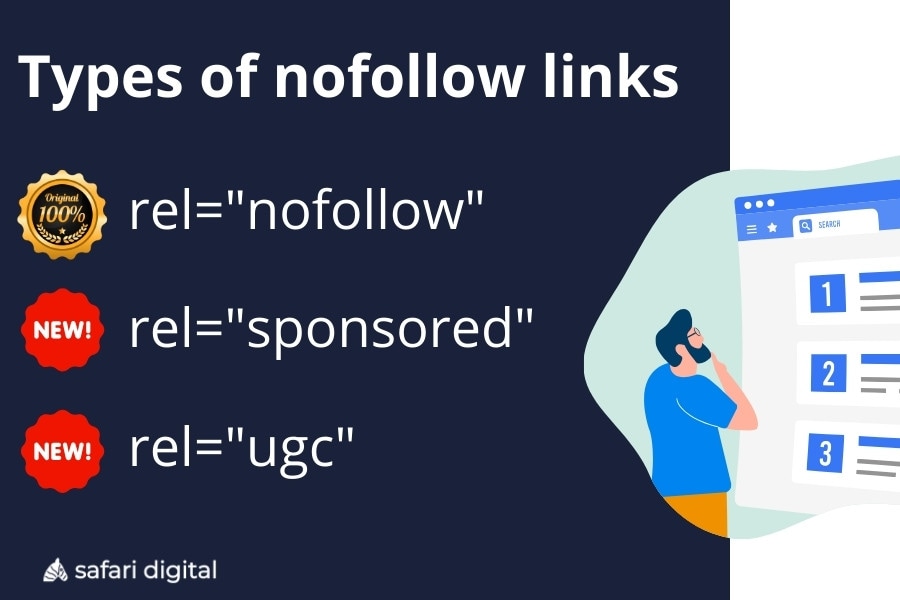
The update to link categorisation was the first significant change since the nofollow attribute was first introduced back in 2005.
The two new attributes are intended to make it easier for webmasters to categorise types of links and ensure that they are providing search bots with accurate, usable information for these links.
rel=”sponsored”
The sponsored link attribute is intended to be used to mark any links on a website that were created as part of an advertisement, sponsorship, or any other compensation agreements such as partnerships (paid or otherwise).
rel=”ugc”
The UGC or User Generated Content tag is intended to be used for links that come about as a result of user generated content. Google mentions things such as comments and forum posts as the two main use cases for the UGC link attribute, however, we may also reasonably assume that this includes author profile links.
What Google had to say about changes to nofollow link attributes
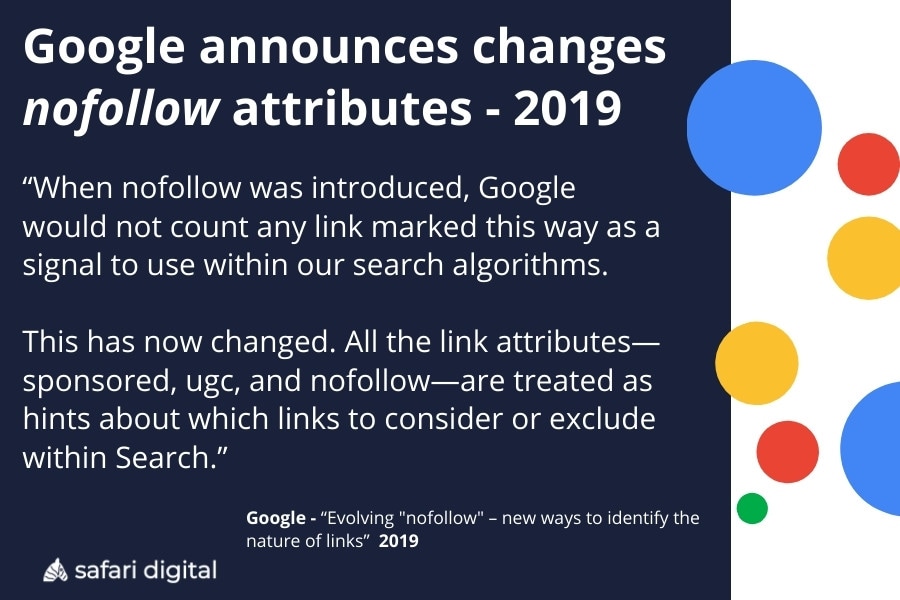
When nofollow was introduced, Google would not count any link marked this way as a signal to use within our search algorithms. This has now changed. All the link attributes—sponsored, ugc, and nofollow—are treated as hints about which links to consider or exclude within Search.
For the sake of clarity, whenever we refer to a nofollow link, we are referring to rel=”nofollow”, rel=”sponsored”, and rel=”ugc”.
How to find out if a link is nofollow or dofollow
If you’re using a third-party tool like Ahrefs or Semrush to check links, then it’s simply a matter of filtering by link type. If you’re looking to check if a link is nofollow from a page, the Moz Bar tool is a useful tool that highlights dollow and nofollow links in different colours (green and purple, respectively) to differentiate.
Without using any tools, here is how you can check if a link is nofollow:
1. Right click on the link and select “View page source”
2. When the page source opens, look at the highlighted section in the HTML of the page
3. If the highlighted section includes rel=”nofollow”, then that link is nofollow. If the link is not wrapped in any other HTML attribute, then the link is “follow”.
Types of links that are typically nofollow
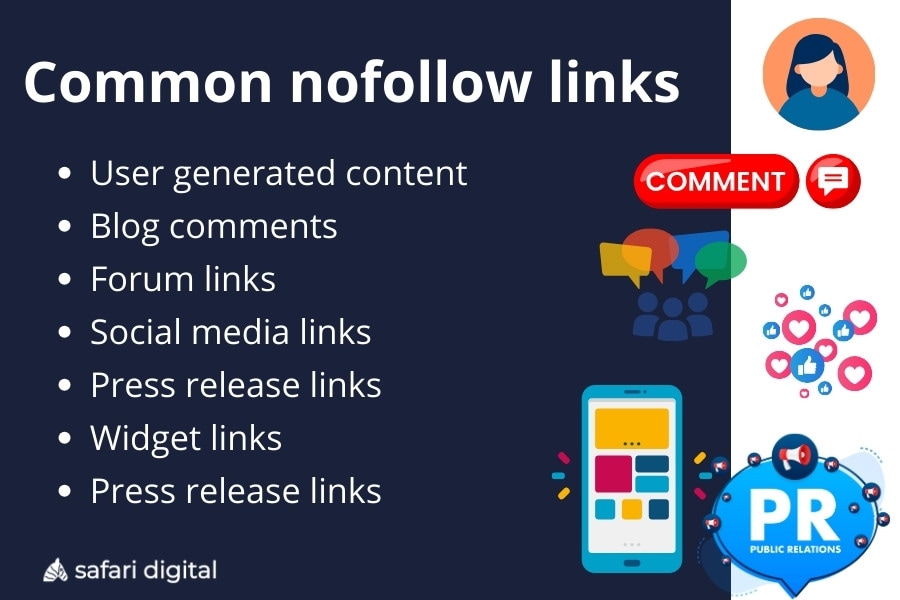
User generated content
User generated content should now be classified with the rel=”ugc” HTML attribute to convey to search engines that this nofollow link was produced by users of the platform.
Paid links
Following changes made to the nofollow link classification system made back in 2019, paid links should be marked as rel=”sponsored”.
Directory links
Directory links or links from sites that promote businesses such as registries can still play a valuable role – particularly in local SEO. However, these links should be marked as nofollow by the moderators/owners of these sites.
Social media links
Social media links including those from your profile bio and ones posted on profiles are nofollow. Again, while the nofollow attribute tells seach engines not to follow the link or pass PageRank, social media links can still play a valuable role in driving referral traffic to a website. This is particularly notable for timely news and information that may be less relevant in the time search engines take to index new content.
Press release links
Press release links are a contentious issue amongst SEOs. Depending on the origin, press release links may be a viable source of information. However, in most cases, press release links have become a haven for low quality, spammy link practices which is why they should be marked as nofollow.
Forum links or blog comments
Links from forum posts, blog comments, and similar sources were the reason that Google introduced the nofollow attribute back in 2005. Similar to social media, when used correctly, these links can still provide valuable referral traffic, however, they should be marked as nofollow.
Are nofollow backlinks beneficial for SEO?
Nofollow backlinks have always been considered a natural part of a healthy, natural, and robust backlink profile.
Significant changes outlined in the document “Evolving “nofollow” – new ways to identify the nature of links” released by Google on September 10, 2019 confirmed that nofollow links, including sponsored and ugc, would be used as a hint to search engines.
Google implemented this update on March 1, 2020, with the caveat that they would continue to carefully assess the impact of these changes.
Value of nofollow backlinks
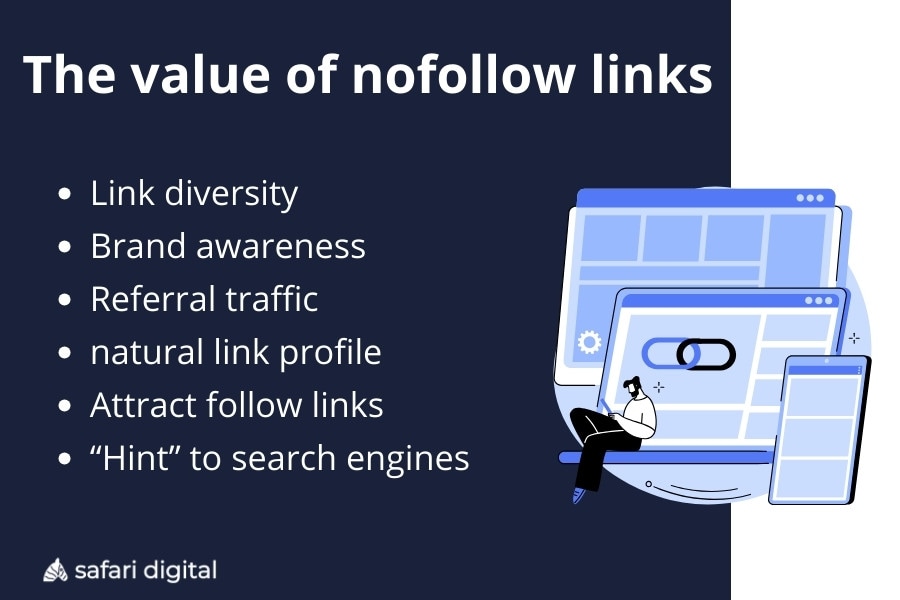
1. Backlink profile diversity
When it comes to backlinks, diversity is key. Backlinks come from a range of different sources. Some will be the direct result of your off-site link building or PR efforts, while others come from aggregator sites, forums, and directories that are sometimes beyond your control. In any case, a natural link profile is defined by diversity. A carefully curated backlink profile that is 100% dofollow isn’t natural and can sometimes set off link spam alarm bells with search engines.
2. Brand awareness
To a user, there is no different between a dofollow and nofollow backlink. Nofollow backlinks from social media, PR, and other forms of online publicity can all help to build brand awanress. Brand awareness can, in turn, boost brand search and organic traffic.
3. Referral traffic
Referral traffic from nofollow links can still provide valuable website traffic which you can convert into paying customers.
4. Nofollow links can attract follow links
You know the saying any publicity is good publicity? The same can be said about nofollow backlinks. Nofollow backlinks from social media or brand promotion can lead to dofollow backlinks from other sources that syndicate, recreate, or publish stories stemming from the nofollow links.
5. Ranking hint to search engines
As we mentioned, Google made some important amendments to its nofollow system back in 2020 when it said that nofollow links would now be used as hints which search engines could consider or exclude within Search. Prior to this, nofollow links were ignored completely, so this messaging suggests a significant change in how Google views nofollow links.
Final thoughts
Nofollow links are an important, natural part of any strong backlink profile in 2024. While Google may not place the same weight on them in its search ranking algorithm, nofollow links still provide a host of benefits beyond PageRank.
Almost every SEO professional will tell you that they would choose a nofollow link from a reputable website, than a dofollow link from one with less authority.



